Put them side by side and you might miss what’s new with the 2026 Alfa Romeo Tonale compared to the model it replaces, but if you spend a few minutes behind the wheel or inside the cabin, it’s a little clearer that Alfa has been busy tidying up the finer details of its small SUV.
The Italian brand’s first compact SUV hasn’t exactly lived up to its ‘baby Stelvio’ billing in the past, with earlier versions feeling more pretty than passionate. This update aims to fix that, promising sharper dynamics, more polish inside, and a few visual tweaks as part of what is, to be fair, a relatively minor update. Think of it as an Italian espresso that’s been dialled in properly after a few under-extracted shots.
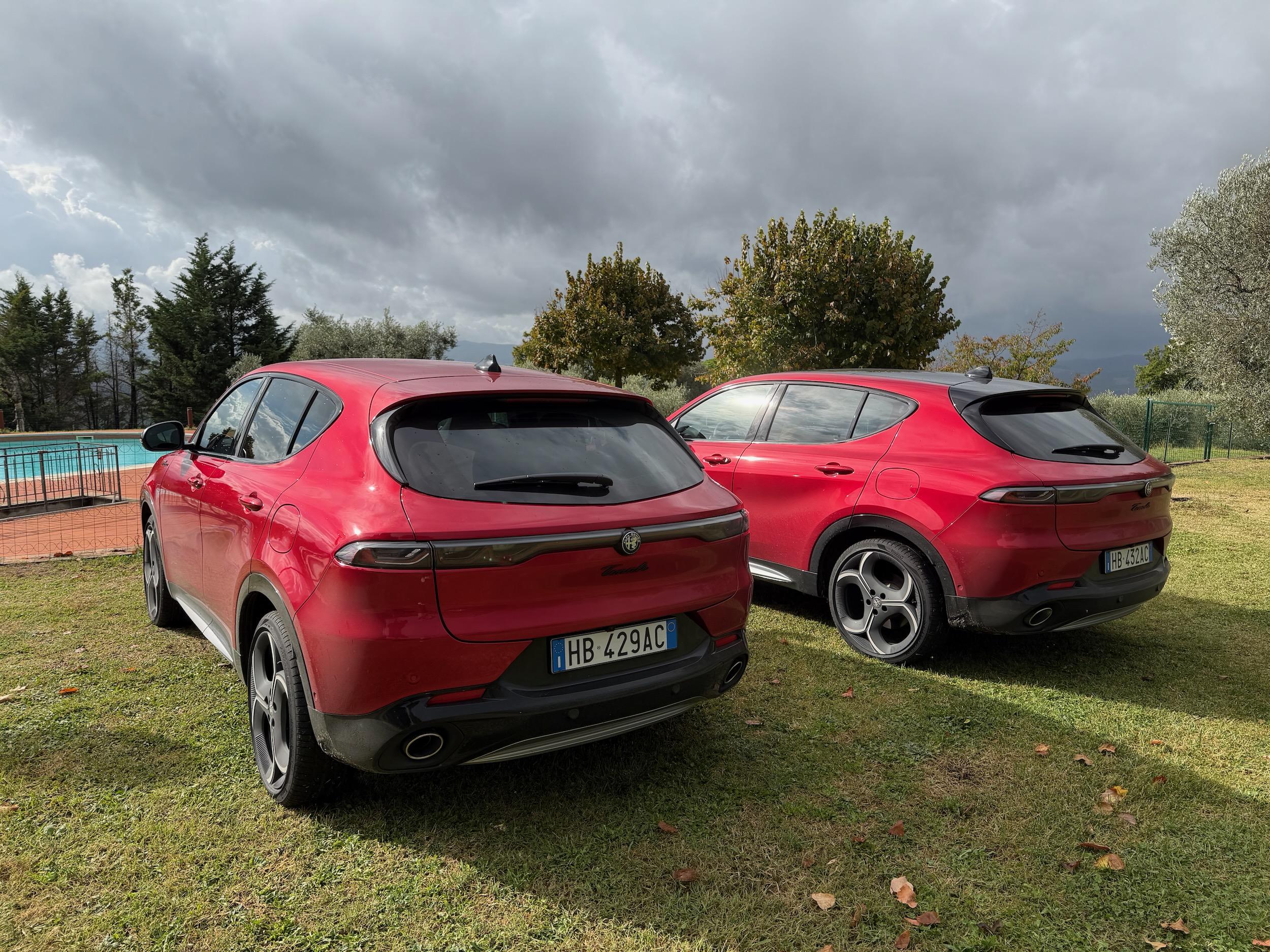
There are so many reasons to consider the Tonale over yet another German SUV, but Alfa Romeo’s struggles in capturing the hearts and minds of Australian buyers remain. Most premium buyers love the idea of driving an Alfa Romeo, but when it comes to actually signing on the dotted line, they tend to look elsewhere.
Brisbane buyers don’t even have the option to buy an Alfa Romeo, as the brand lacks any local dealerships there and its national retail footprint isn’t exactly large. There are many other reasons Alfa continues to struggle locally, but the cars themselves have always been fun to drive and a pleasure to look at.
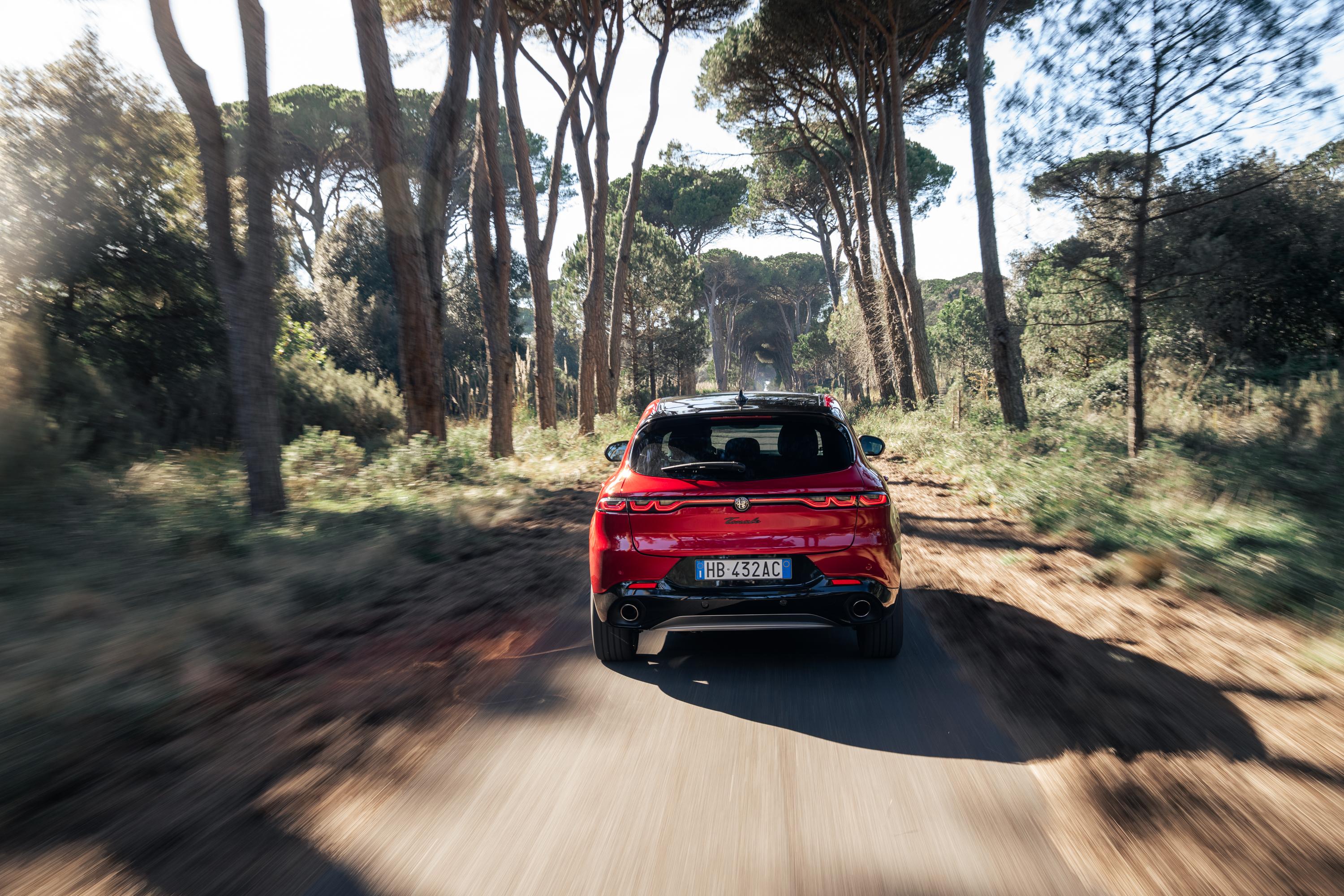
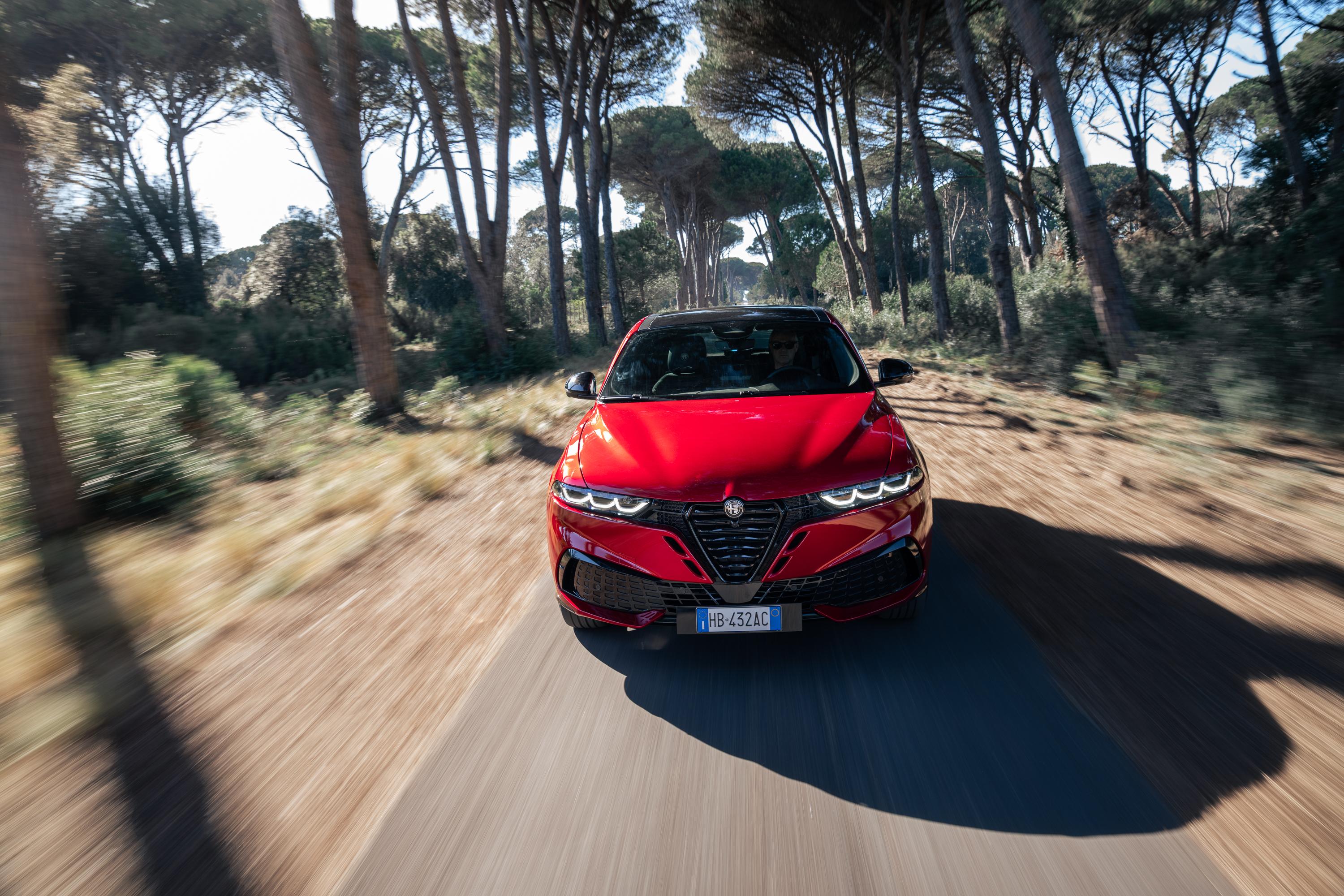
If you have been considering a Tonale in the past but have been hesitant to give it a go, it’s now better than it’s ever been thanks to a big update to the hybrid powertrain and driving dynamics, but it really depends on Alfa Romeo being able to position the vehicle at the right price alongside a horde of German competitors that are pumping out excellent options like the BMW X1, supported by an extensive dealer network across the country.
The 2026 Alfa Romeo Tonale is a mid-life update to a car that didn’t do as well as the Italians had hoped. While it looks pretty much identical to the car it replaces, the revisions and improvements have made it a genuine contender against its rivals.
On the outside, the updated Tonale now has a curvier front-end, with the lower air intakes resembling the newer and even smaller Junior light SUV. At the same time, other fresh design elements draw inspiration from the Italian automaker’s racing history, and cars like the Giulia GTA.
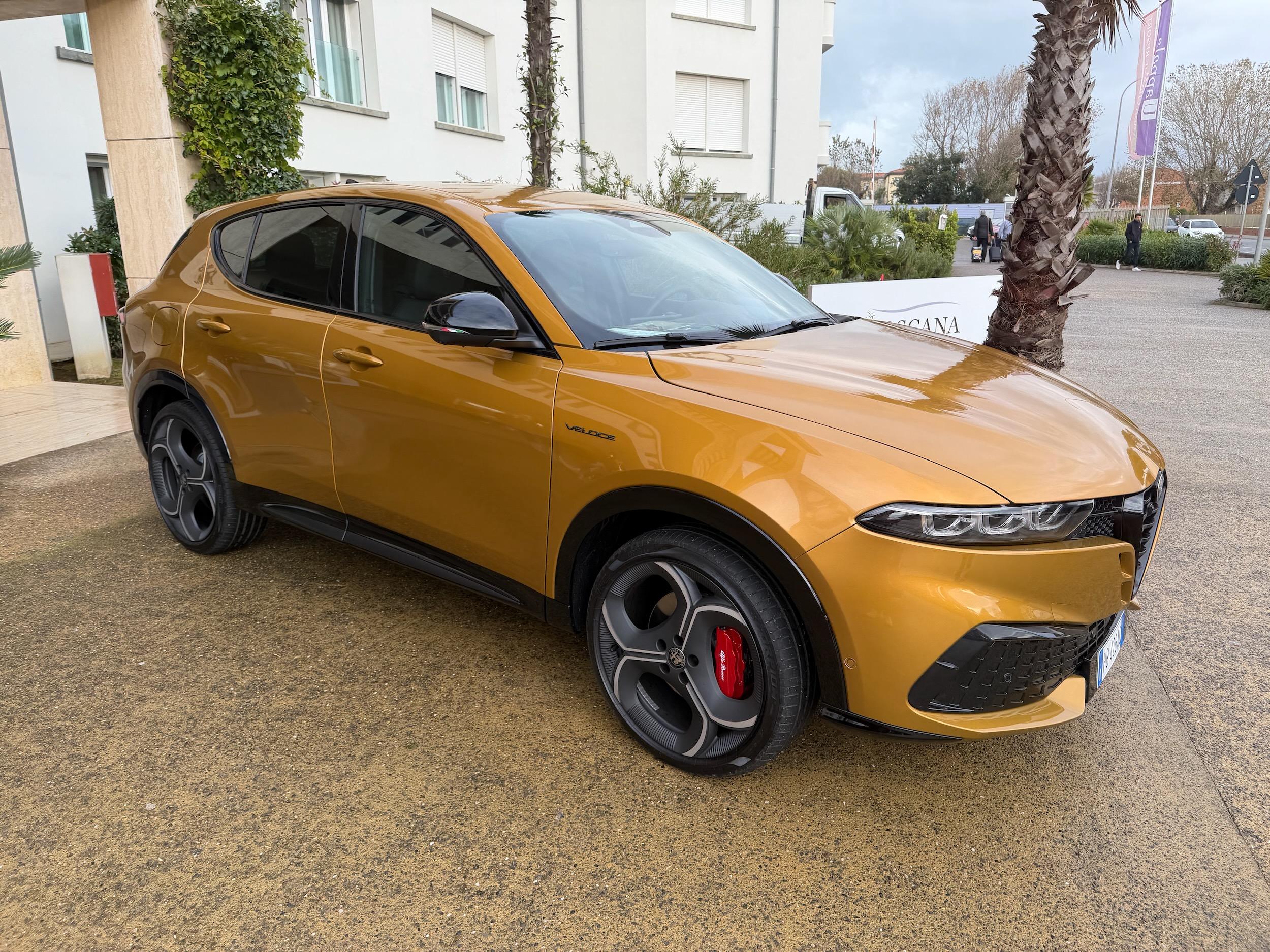
The front overhang has been shortened to better balance the car’s proportions, and there’s a choice of updated alloy wheel sizes for each variant. There are also three new metallic paint colours – Rosso Brera (red), Verde Monza (green), and Giallo Orca (yellow) – and an optional two-tone arrangement with a black roof, which we love dearly.
The revised Tonale arrives in Australia early in 2026, but we recently had a chance to drive the top-spec plug-in hybrid Tonale Q4 overseas, ahead of its local release.
How much does the Alfa Romeo Tonale cost?
Pricing for the 2026 Alfa Romeo Tonale remains to be confirmed, but towards the end of the pre-updated model, the local operation was doing runout deals of $45,990 drive-away for the entry-level Tonale Ti mild-hybrid (MHEV).
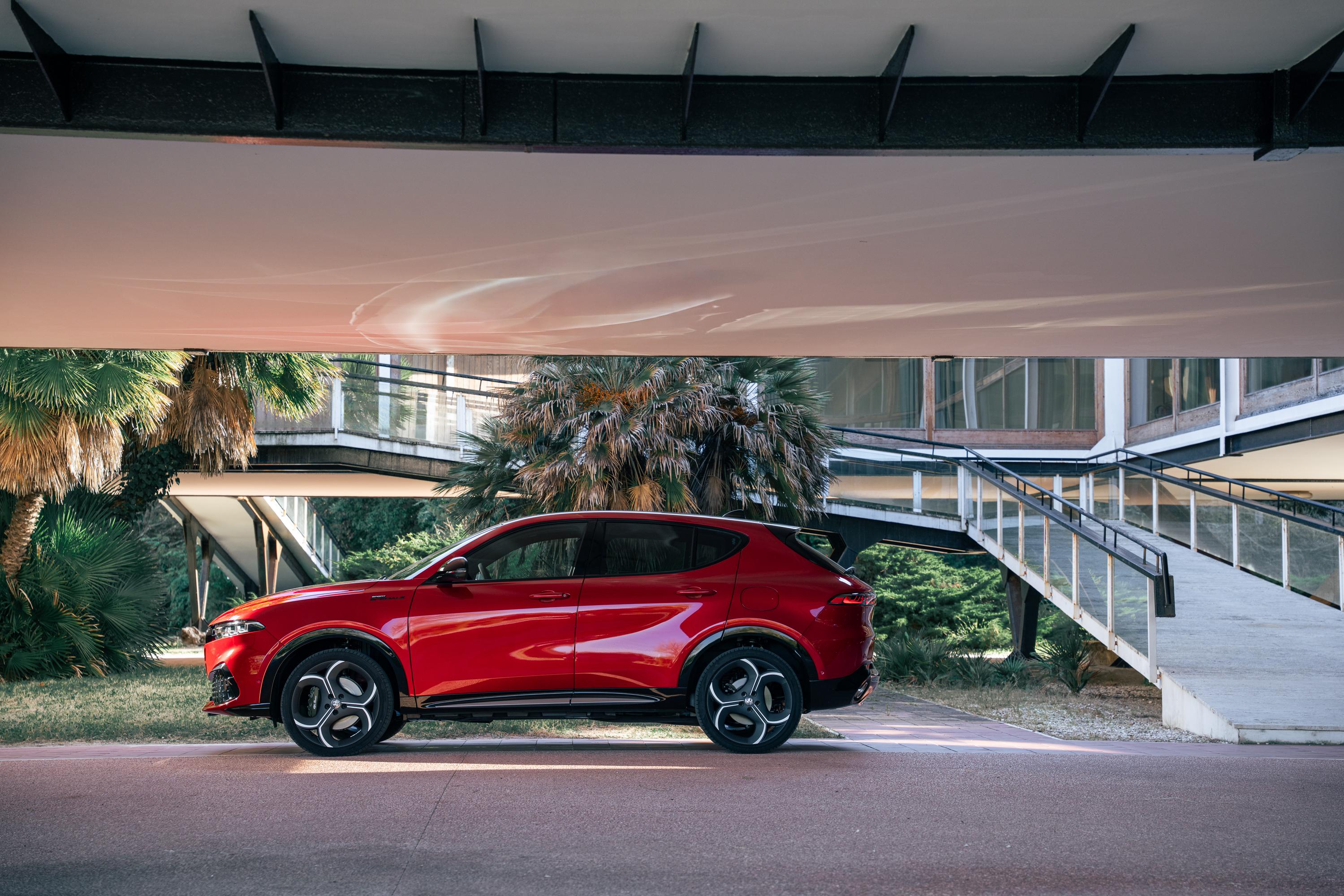
If pricing were to remain consistent with the outgoing Tonale, the 2026 model range will start at $49,990 and end at $79,000 for the plug-in hybrid (tested here).
To see how the Alfa Romeo Tonale lines up against the competition, check out our comparison tool
What is the Alfa Romeo Tonale like on the inside?
Alfa’s designers have taken the Tonale’s already stylish cabin and given it a proper once-over. The fundamentals remain unchanged, with the 10.25-inch digital instrument cluster and 12.3-inch infotainment touchscreen carried over, but the materials and detailing have stepped up.
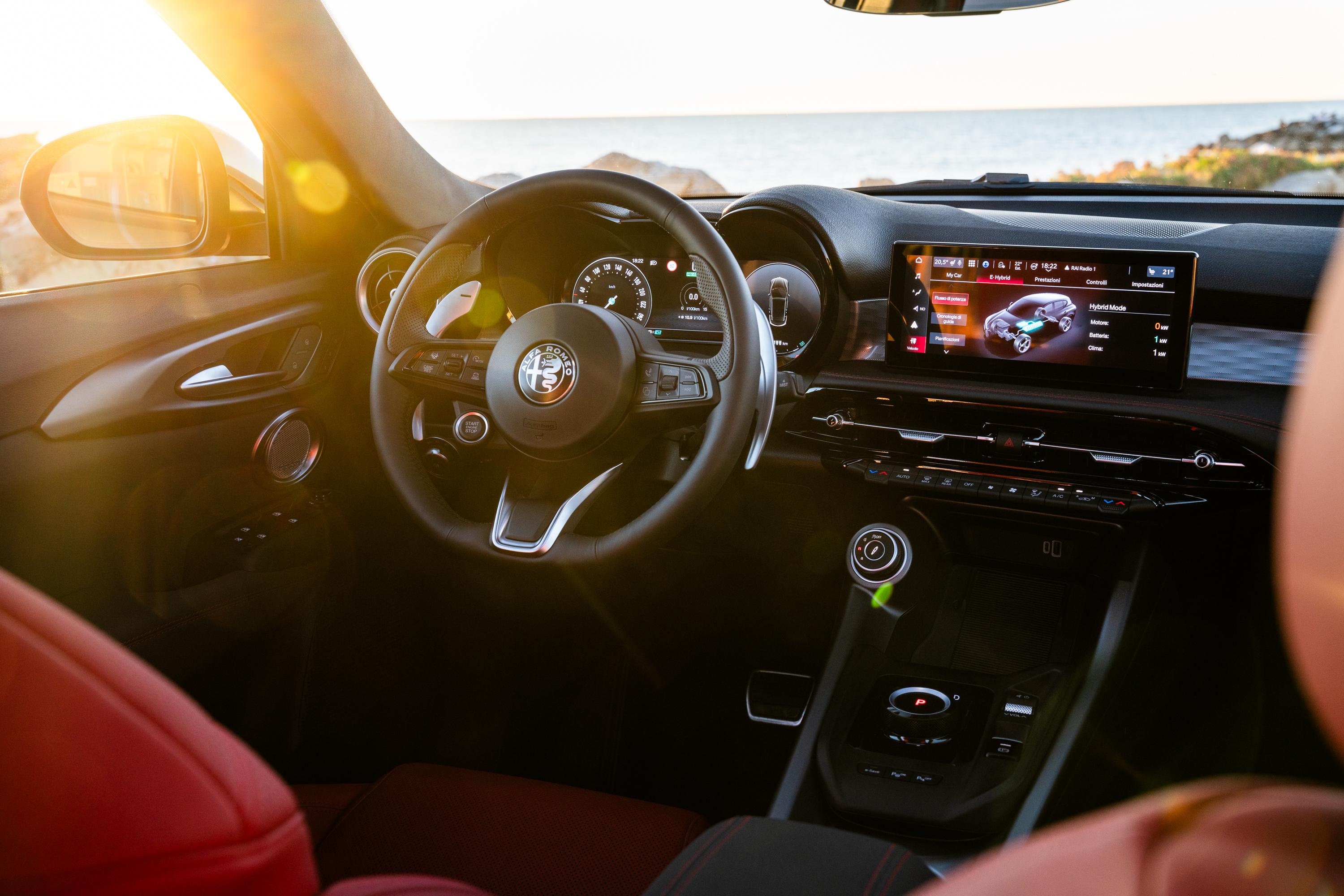
The infotainment system itself is fast and easy to use, with a super-clear screen and responsive software, but it’s not up to the standards of BMW’s latest iDrive setup.
There’s now a choice of red leather or two-tone black and white Alcantara upholstery, complete with contrast stitching and matching dashboard trim. The centre console has been reworked with a new rotary gear selector that’s easier to reach and looks less like it was sourced from a parts bin.
Alfa says that removing the traditional gear selector has allowed a better driving experience and easier access to the volume controls.
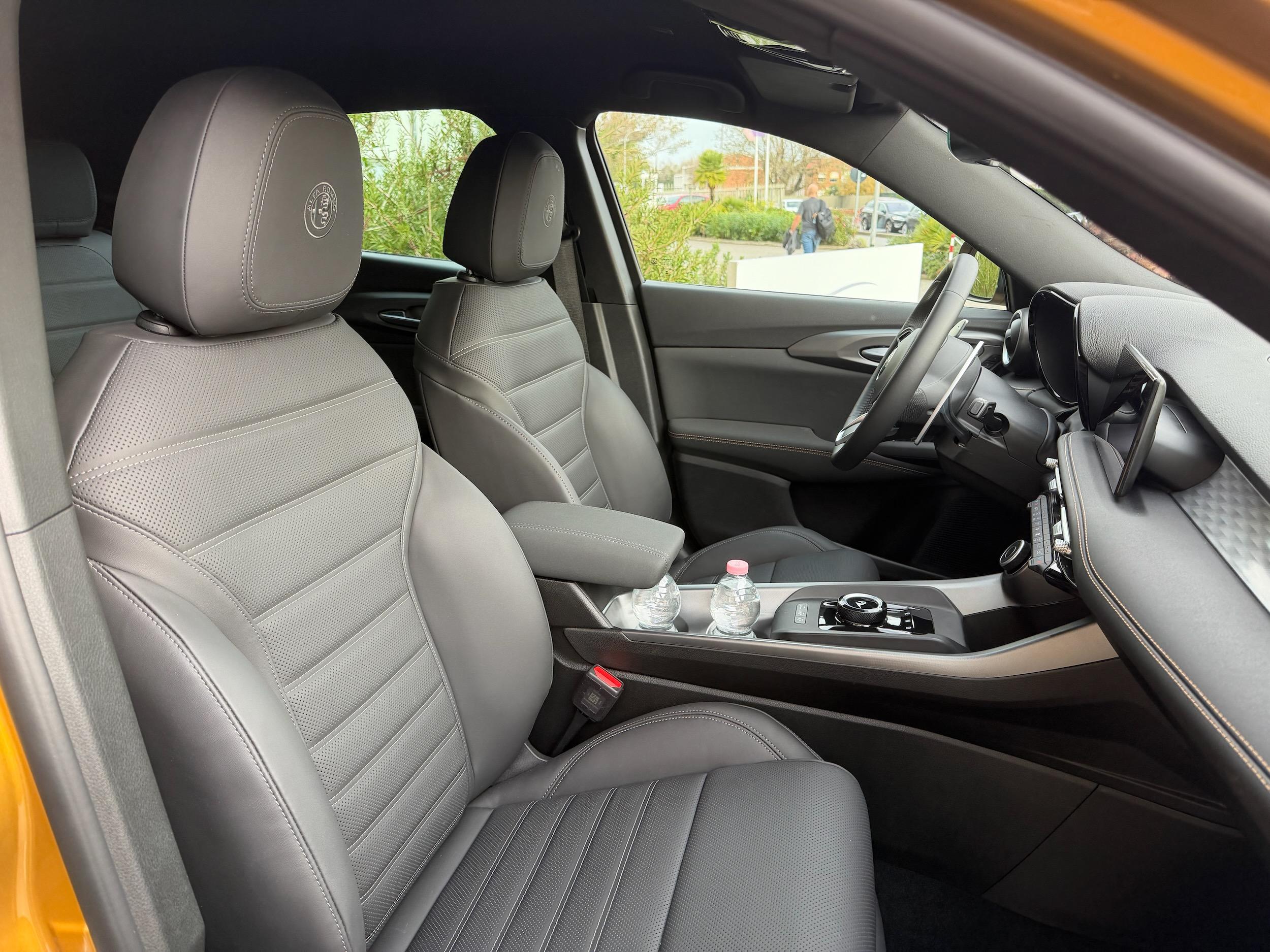
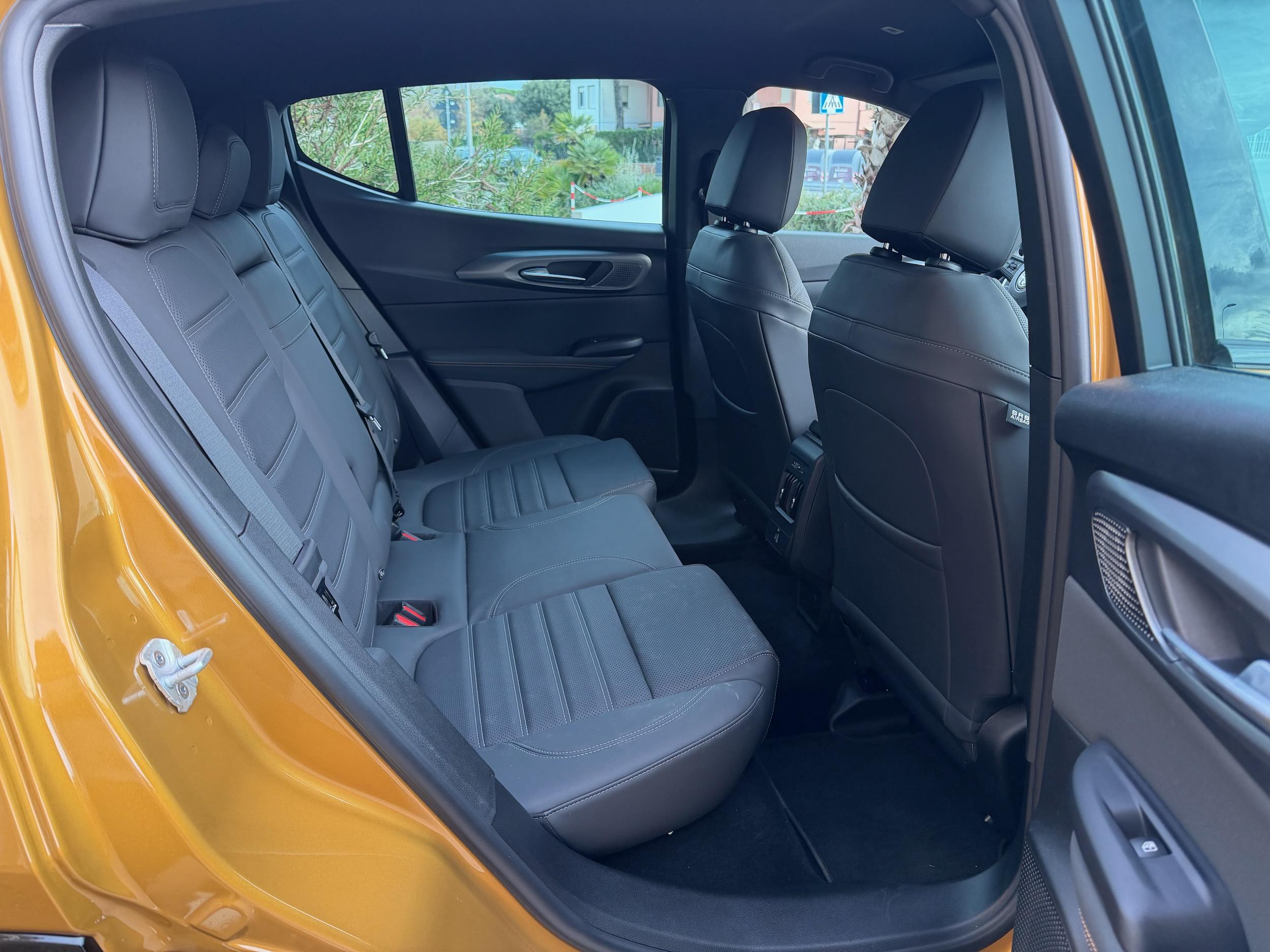
Our thoughts on the change are mixed. On the one hand, it definitely looks better and is far more practical but, on the other, the rotary dial is almost lagging in its operation and makes a rather strange noise as it transitions from one option to the next.
It’s almost like they have replaced the traditional gear lever with an electric system that manually moves the gear lever under the centre console.
Other changes include the addition of ambient interior lighting, which has been given the Italian treatment, with a gradient-style effect across the dash that’s more ‘Milan boutique’ than ‘mid-spec crossover’.
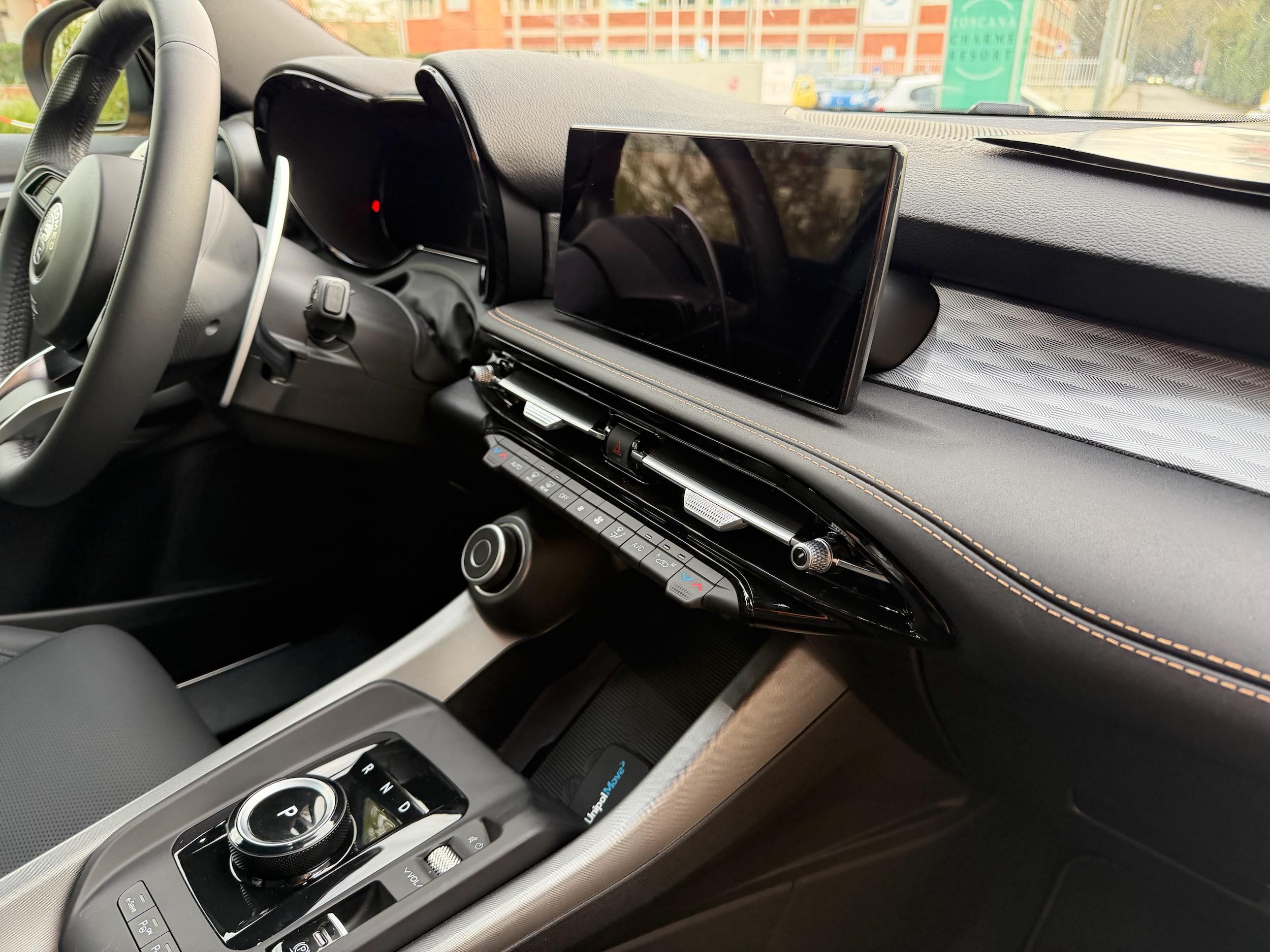
Front-seat occupants get eight-way electrically adjustable seats with heating, ventilation, and lumbar support, while the steering wheel and even the washer nozzles are now heated, which is handy for the two frosty mornings you’ll actually get in Brisbane.
It still feels compact inside, and the boot hasn’t grown, but the fit and finish are better resolved than before.
Compared with the earlier hybrid model, in which some plastics and switchgear felt a touch Fiat-like, this feels closer to what the badge promises.
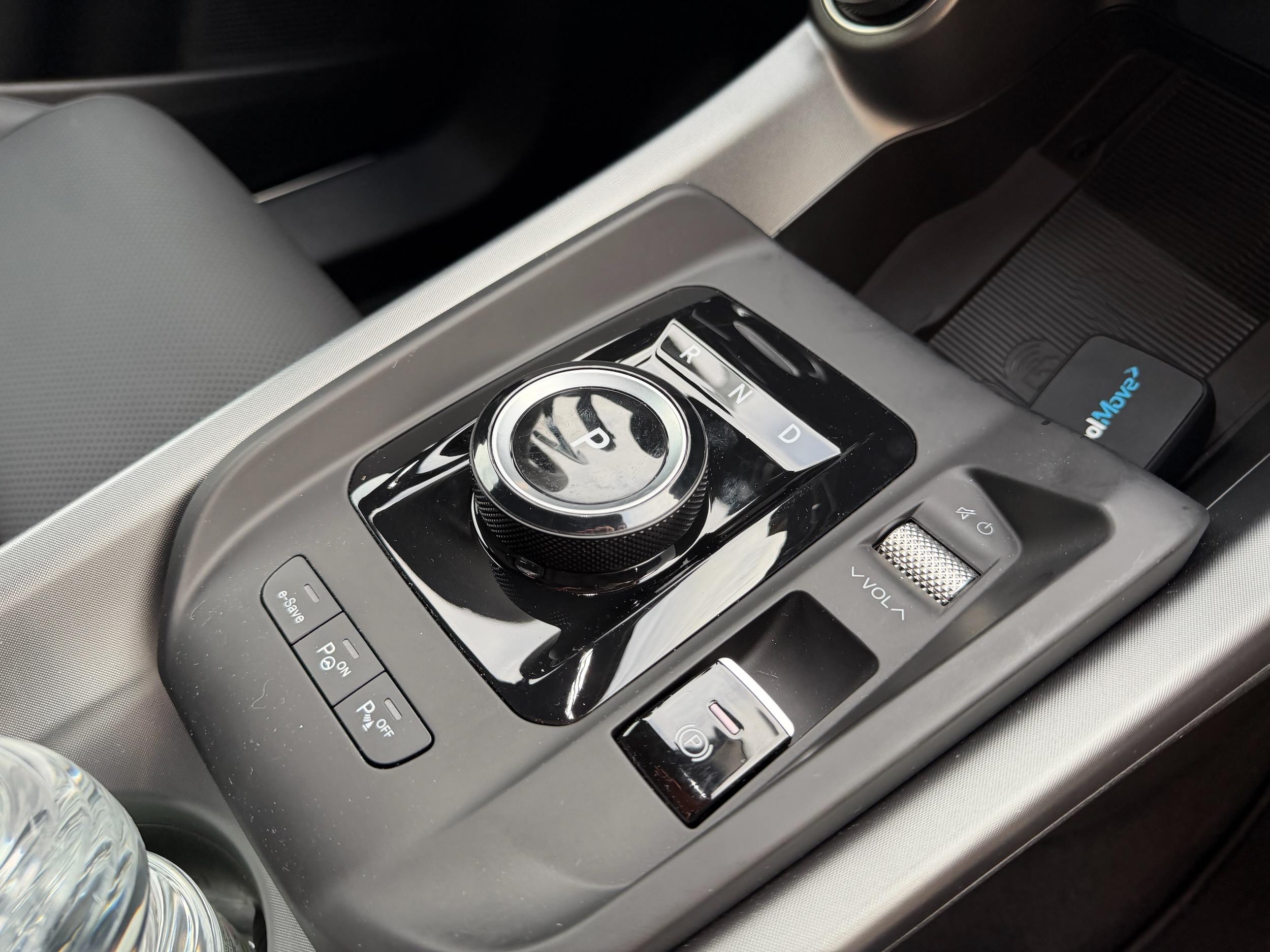
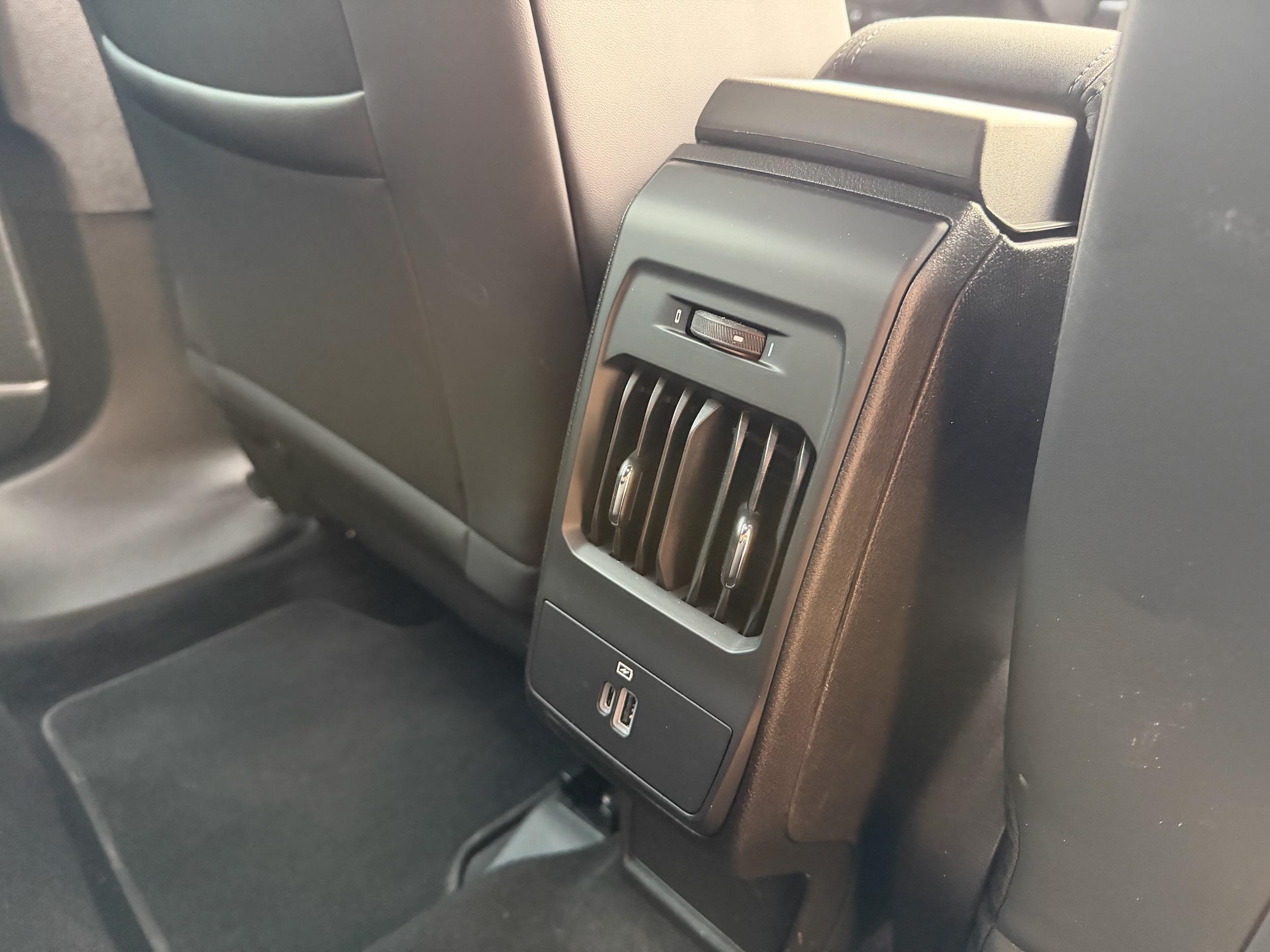
The seats themselves are pretty comfortable, and the driving position is top-notch, with a great view over the bonnet.
It makes extracting the best out of the Tonale a more enjoyable experience.
It’s a relatively spacious cabin for four adults, but you’ll will struggle for legroom if you are carrying tall passengers. It certainly wouldn’t be the sort of car you’d regularly transport five passengers around in.
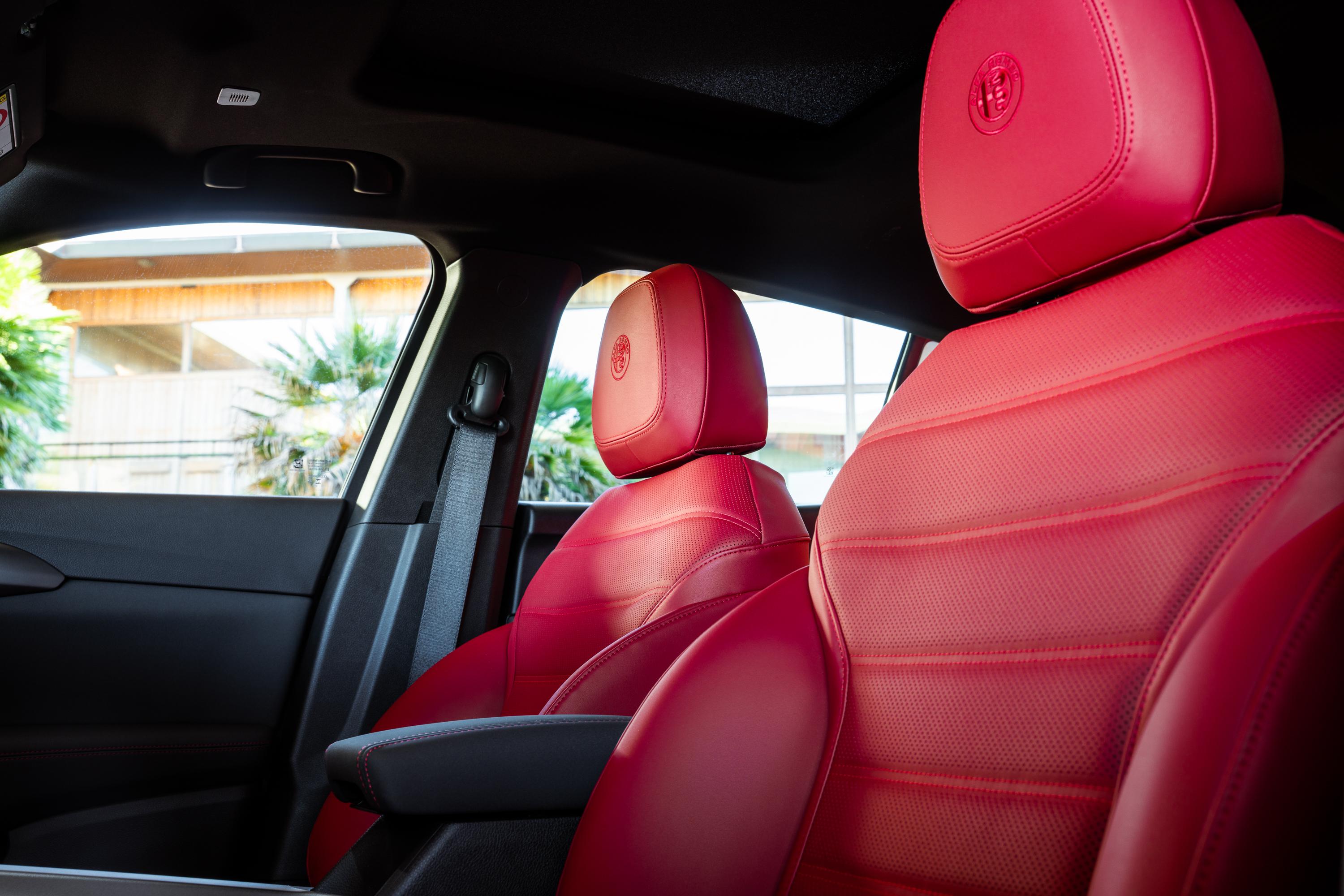
Open the tailgate and you’ll find a boot with a claimed 385 litres (500L for the base non-plug-in hybrid) of space, under the floor of which sits a space-saver spare. The rear seats fold flat, expanding cargo capacity to 1430L (1550L).
| Dimensions | Alfa Romeo Tonale |
|---|---|
| Length | 4522mm |
| Width | 1841mm (2082mm with mirrors) |
| Height | 1614mm |
| Wheelbase | 2636mm |
| Cargo capacity | 385-500L |
To see how the Alfa Romeo Tonale lines up against the competition, check out our comparison tool
What’s under the bonnet?
The big story for 2026 is that Alfa Romeo’s engineers have refined the powertrain in response to customer feedback. The hybrid and plug-in hybrid systems have been retuned with a refined ‘Hybrid Control Processor’ designed to smooth the transitions between petrol and electric power.
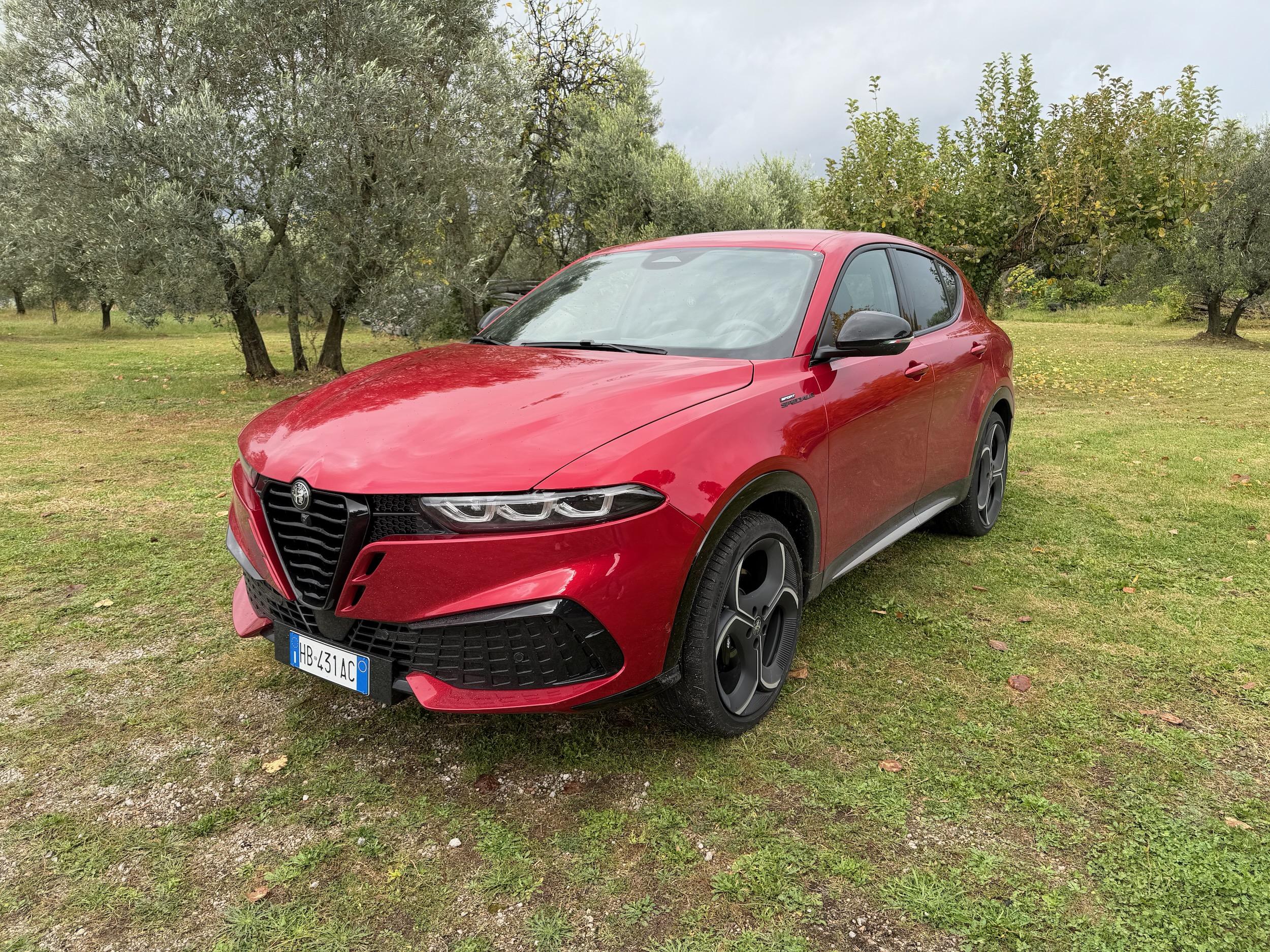
If you remember the jerkiness and low-speed hesitation that plagued the old hybrid – and which CarExpert’s earlier reviews politely called “rough and jerky” – that’s exactly what Alfa says it’s fixed.
The Tonale hybrid runs a refined 1.5-litre turbocharged four-cylinder petrol engine with 48-volt assistance, making it good for 132kW of power delivered to the front wheels through a seven-speed dual-clutch auto. There’s still a diesel option overseas, but don’t hold your breath for that one here.
At the top of the range sits the plug-in hybrid Q4, offered in 190hp and 270hp (198kW) tunes. Australians will only get the top-spec tune. It keeps the 1.3-litre turbo-petrol engine, but is coupled to a revised rear electric motor delivering proper all-wheel drive.
| Specifications | Alfa Romeo Tonale Plug-in Hybrid Q4 |
|---|---|
| Engine | 1.3L turbocharged 4cyl petrol |
| Engine outputs | 110kW / 270Nm |
| Electric motor outputs | 94kW |
| System outputs | 198kW |
| Battery | 15.5kWh lithium-ion |
| Max AC charge rate | 7.4kW (2.5h) |
| Transmission | 6-speed automatic |
| Drive type | All-wheel drive (Q4 electrified system) |
| Weight | 1835kg (DIN kerb weight) |
| 0-100 km/h (claimed) | 6.6 seconds |
| Fuel economy (claimed) | 3.4-3.7L/100 km (WLTP) |
| Fuel economy (as tested) | Significantly more once the battery is depleted |
| Electric driving range (PHEV) | Up to 61km (WLTP combined) |
| Fuel tank capacity | 43L |
| Fuel requirement | 95-octanre premium unleaded |
| CO₂ emissions | 77-83g/km (WLTP) |
| Emissions standard | Euro 6E Bis |
| Braked tow capacity | 1250kg |
To see how the Alfa Romeo Tonale lines up against the competition, check out our comparison tool
How does the Alfa Romeo Tonale drive?
The Italians position the Tonale as the opposite of a computer on wheels – almost an antidote to the current horde of cars that ruin the driving experience with endless intrusions. Which is ironic because the vehicle’s flashy presentation in Pisa included a lot of opinion about the Tonale from the company’s imaginary artificial intelligence dubbed ‘Sphere’.
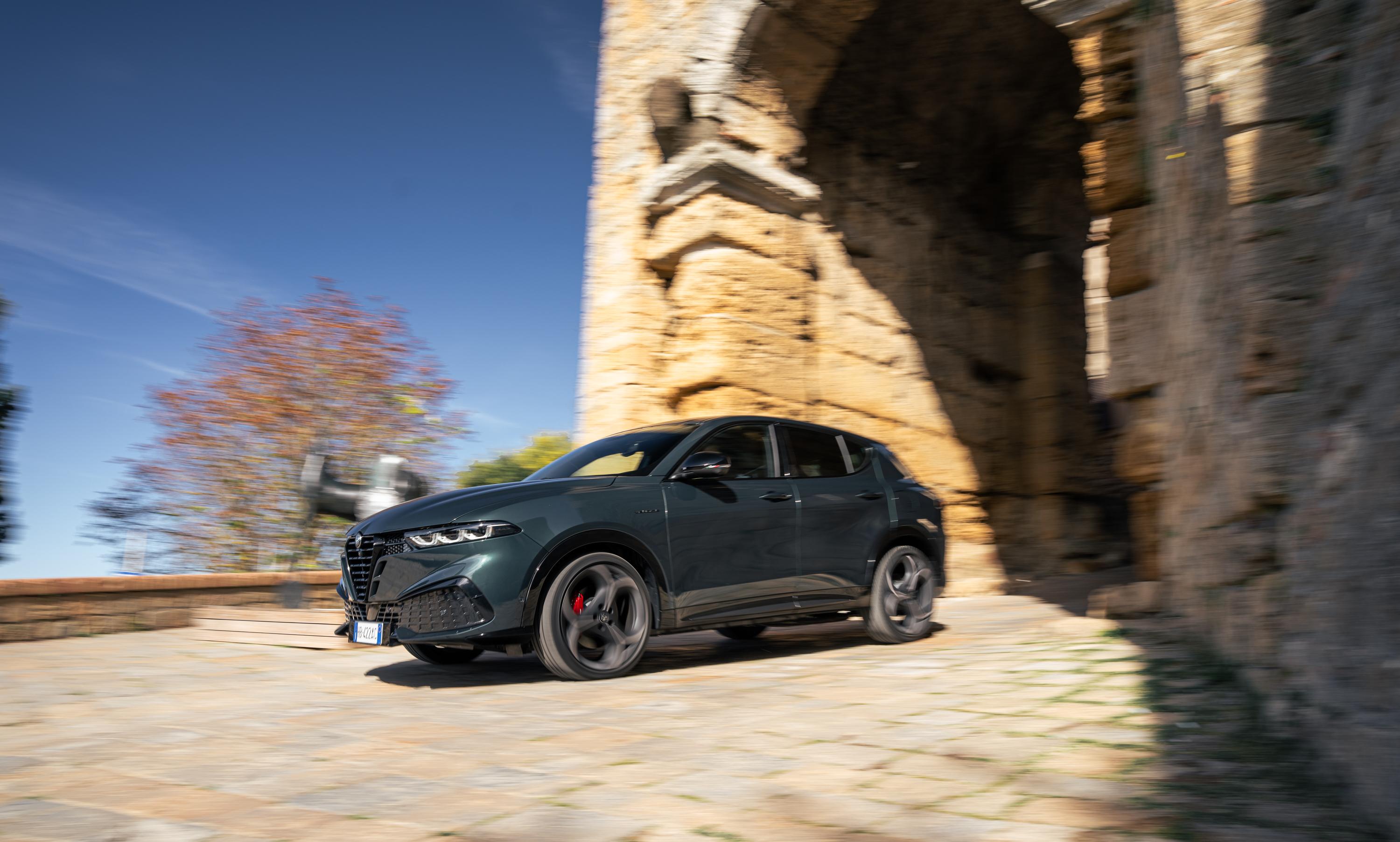
For the record, there is no Sphere, and Alfa doesn’t proclaim to be a technology-led company, but instead one that makes cars for people who still enjoy being in control and driving.
Apart from other minor driving revisions, the engineers have widened the Tonale’s track width (by 7.6mm), which is supported by adaptive suspension damping and what the company describes as “the most direct steering in the segment”.
We can’t say if that claim is valid, but we can definitely agree that the steering is impressively sharp and very engaging. More engaging than any other car we have tested in this segment.
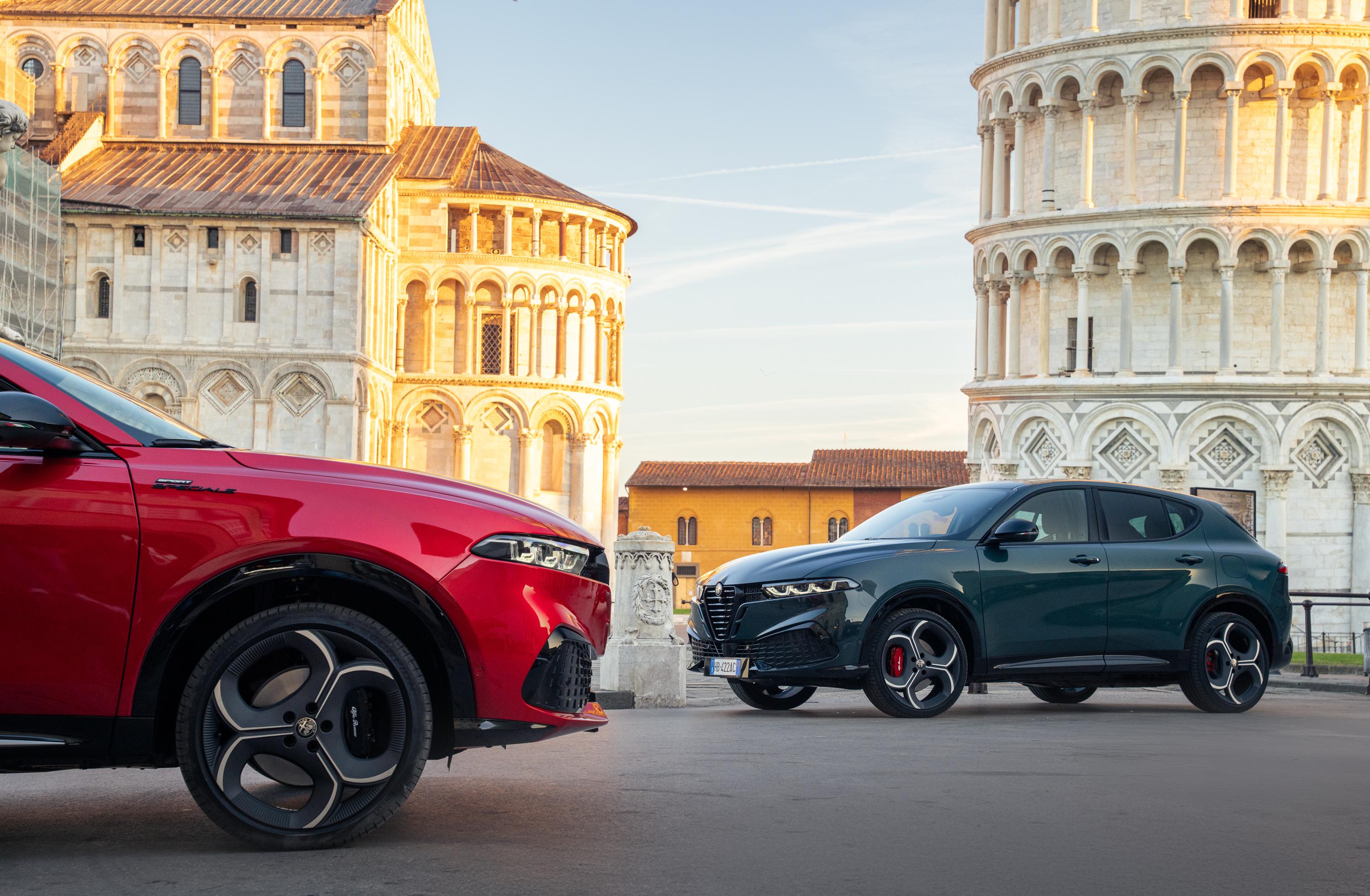
That makes driving the Tonale a hell of a lot of fun, especially on twisty mountain roads. To go with that sharp steering, though, is a pretty firm ride (even on Italy’s smooth roads), which definitely suits the character of the car, but if you intend to venture out of Australian suburbia, it could be a little uncomfortable.
If you think about it from Alfa Romeo’s perspective, the Tonale needs to be different. It can’t just be another European SUV. As such, the driving dynamics are far sportier than those of its German rivals at the same price.
This would certainly limit its appeal to buyers looking for a soft-riding luxury SUV with a nice badge. Still, for Alfa to maintain its identity and appeal, differentiation is a must.
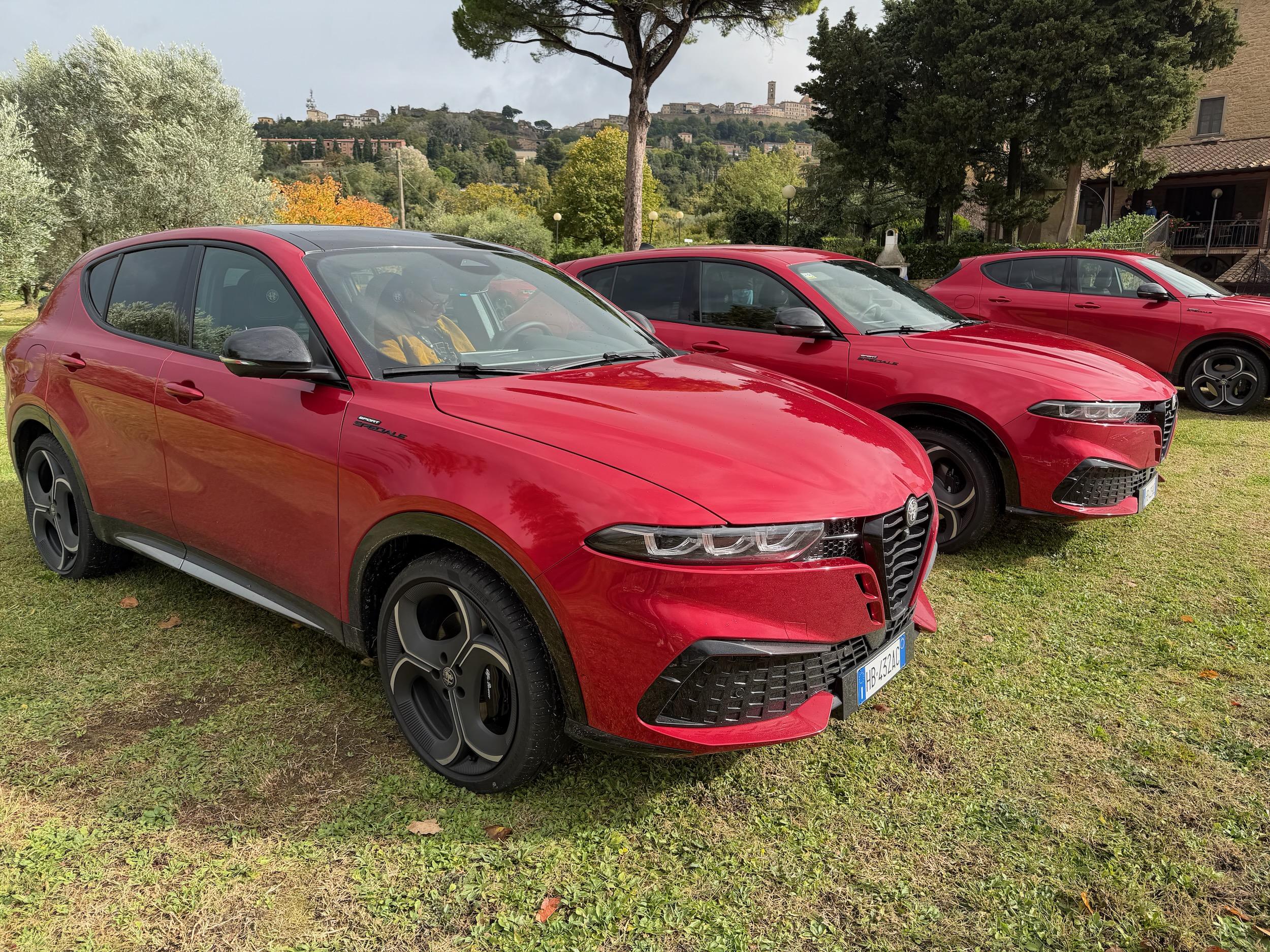
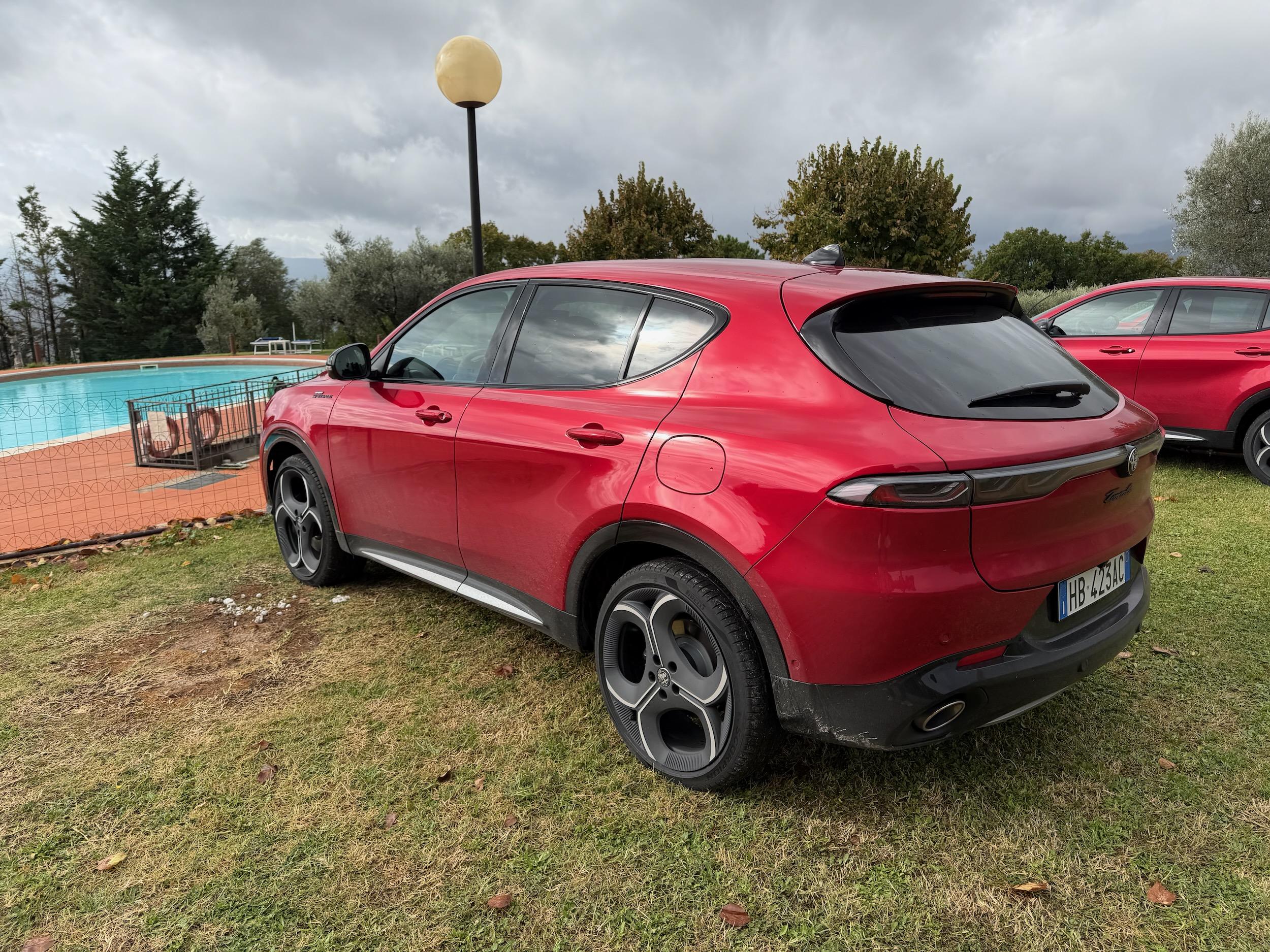
Strangely enough, despite the sharp steering and firm ride, the powertrain doesn’t feel as aggressive as it could. We would love it if Alfa gave the Tonale (and all of its models) a raspier, more emotional noise and gear shifting feel. If you are going to go sporty, go all out.
On the plus side, the transition between the electric powertrain and internal combustion engine is now seemingly imperceptible. You wouldn’t know that the Tonale Q4 is a plug-in hybrid unless someone told you.
We look forward to driving the updated Tonale on Australian roads early next year to bring you a more detailed assessment in local conditions.
To see how the Alfa Romeo Tonale lines up against the competition, check out our comparison tool
Is the Alfa Romeo Tonale safe?
The Tonale wears a five-star ANCAP safety rating, based on testing conducted by Euro NCAP in 2022.
This rating applies to all Tonale variants at launch, with category scores of 84 per cent for adult occupant protection, 87 per cent for child occupant protection, 67 per cent for vulnerable road user protection, and 85 per cent for safety assist.
Safety equipment includes:
- 6 airbags
- Adaptive cruise control incl. stop & go
- Autonomous emergency braking (AEB), incl. pedestrian and cyclist detection
- Intelligent speed assist
- Lane keep assist
- Parking sensors front, rear
- Reversing camera
- Traffic sign recognition
- Blind-spot monitoring
- Rear cross-traffic alert
- Side parking sensors
- Surround-view camera
- Lane centring assist
- Traffic Jam Assist
| Category | Alfa Romeo Tonale |
|---|---|
| Adult occupant protection | 84 |
| Child occupant protection | 87 |
| Vulnerable road user protection | 67 |
| Safety assist | 85 |
To see how the Alfa Romeo Tonale lines up against the competition, check out our comparison tool
How much does the Alfa Romeo Tonale cost to run?
Aftersales provisions for the updated model are still to be confirmed, however, the details below are believed to be correct for the updated Tonale.
| Servicing and Warranty | Alfa Romeo Tonale |
|---|---|
| Warranty | 5 years, unlimited-km |
| Roadside assistance | 5 years |
| Service intervals | 12 months / 15,000km |
| Average annual service cost | 1st service: $500 2nd service: $600 3rd service: $500 4th service: $1000 5th service: $500 |
| Total capped-price service cost | $3100 for 5 years. |
To see how the Alfa Romeo Tonale lines up against the competition, check out our comparison tool
CarExpert’s Take on the Alfa Romeo Tonale
There are many reasons to dismiss the Alfa Romeo Tonale and buy a BMW, Audi, or Mercedes-Benz instead. Lack of a dealer network? Tick. Lower expected residual value? Tick. No German reliability? It’s a contentious point these days since, as Alfa says, not only has it improved but it now has fewer warranty claims than its German rivals. We won’t get into that, but regardless, the list of very valid reasons goes on.
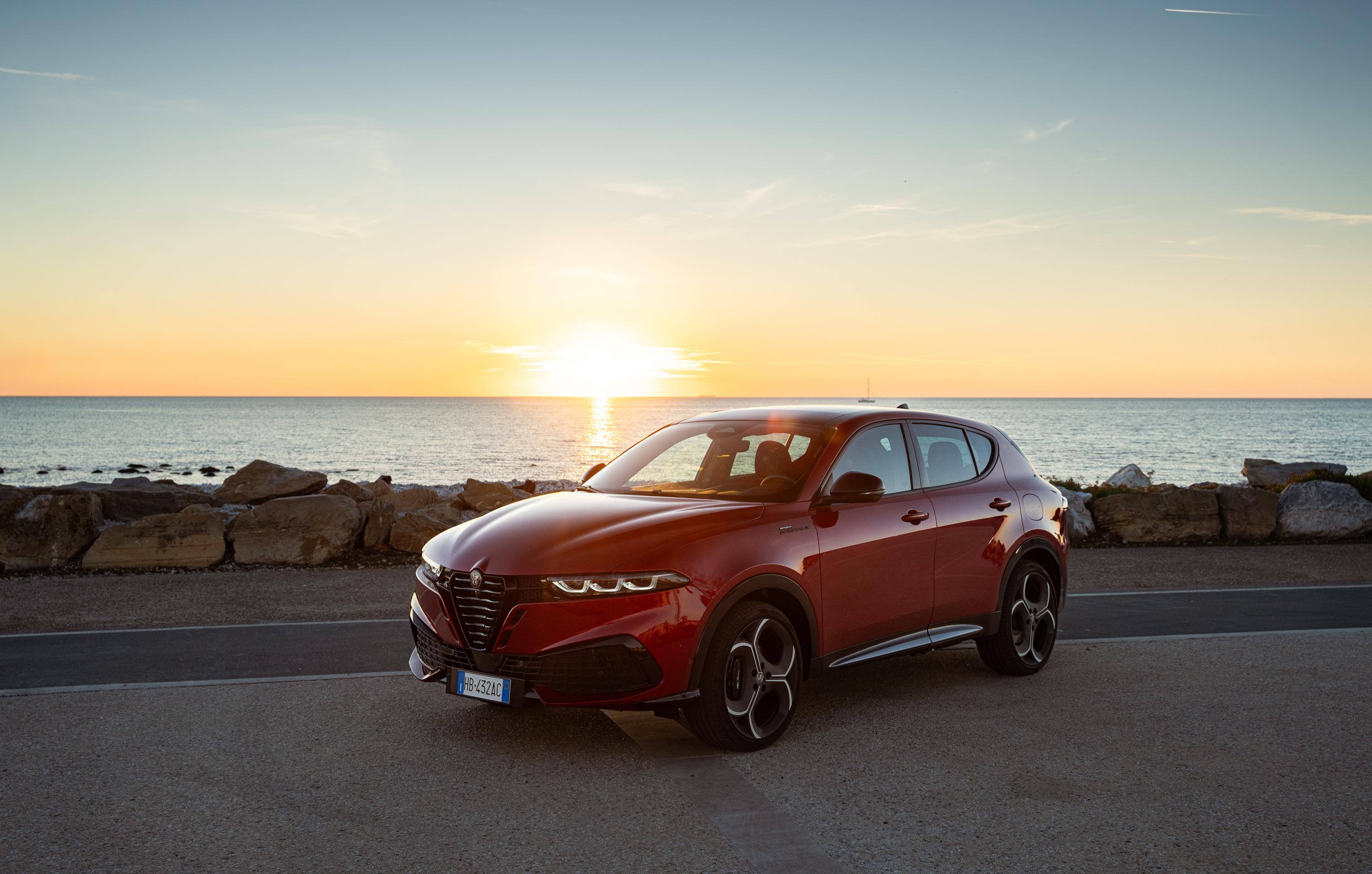
In fact, nobody would think twice about questioning your decision to do what most do and buy German. But then again, the Tonale isn’t made for most – it’s for the outliers that want to be different and have something that half the street doesn’t drive.
It’s an Alfa Romeo. It’s meant to have character and Italian flair. It’s not perfect, but it’s a great option nonetheless. If you want an Alfa and don’t need all this space, buy a Junior instead. However, if the Tonale is the way you go, you wont be disappointed.
The only advice we have if you are thinking about one is to bargain hard for a deal, because Alfa and the Stellantis group as a whole seems to love doing big discounts and drive-away deals in Australia – so you definitely don’t want to be the one that paid full whack.
To see how the Alfa Romeo Tonale lines up against the competition, check out our comparison tool
Click the images for the full gallery

